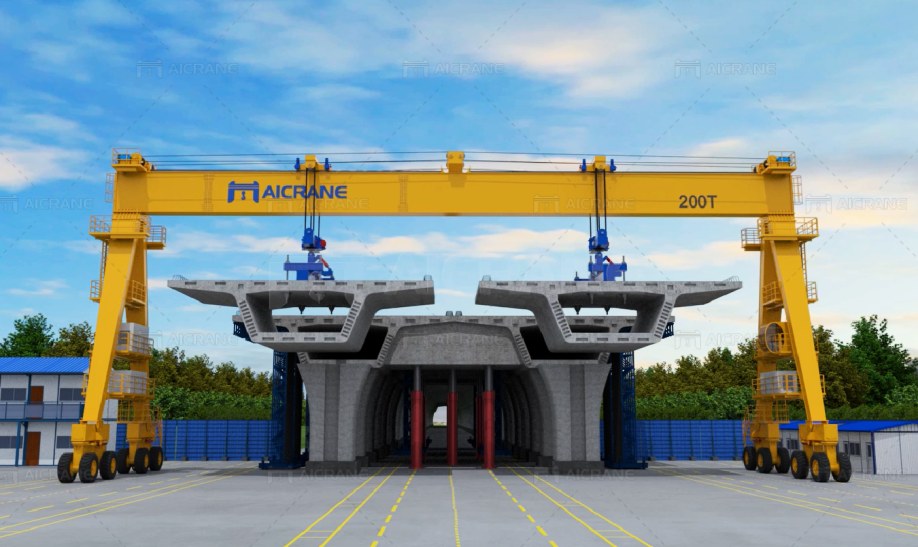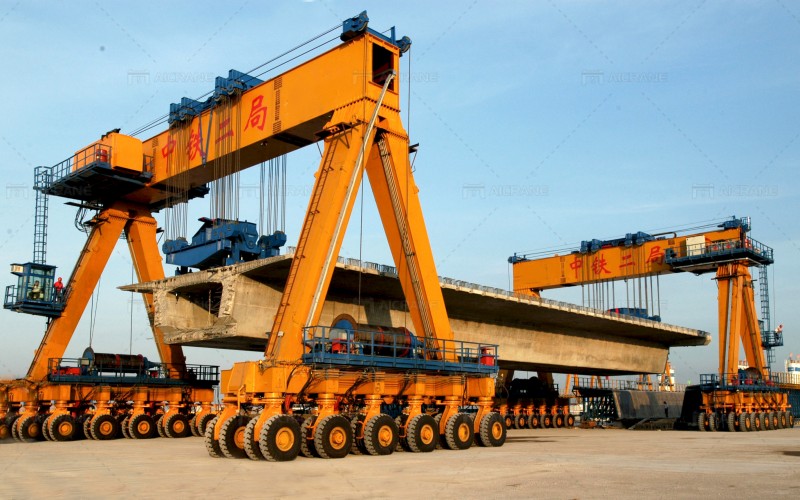In the world of logistics and cargo handling, efficiency and precision are paramount. As global trade continues to grow, the demand for advanced equipment that can streamline operations and boost productivity has never been higher. Among the various machinery used in ports and container terminals, straddle carriers stand out for their versatility and capability. Recent innovations in straddle carrier technology are further enhancing their role in efficient cargo handling, making them indispensable in modern logistics operations.
Understanding Straddle Carriers
Straddle carriers are specialized vehicles used primarily in ports and container terminals to transport, stack, and organize containers. Unlike other container handling equipment, straddle carriers are designed to straddle containers, lifting them from the top and transporting them over short distances. This unique design allows for efficient use of space and improved maneuverability within the terminal.

Straddle carriers come in various sizes and configurations, with lifting capacities typically ranging from 30 to 60 tons. They can handle containers of different sizes, including the standard 20-foot and 40-foot containers. The ability to stack containers up to four high makes them a crucial component in optimizing storage space in busy terminals.
Innovations in Straddle Carrier Technology
Recent advancements in straddle carrier technology focus on enhancing efficiency, reducing environmental impact, and improving safety. Here are some of the key innovations:
Automation and Remote Operation
One of the most significant advancements in straddle carrier technology is the integration of automation and remote operation capabilities. Automated straddle carriers (ASC) use advanced navigation systems, sensors, and software to operate autonomously within the terminal. These systems can precisely position containers, optimize travel paths, and reduce idle times, leading to significant improvements in efficiency.
Remote operation allows operators to control straddle carriers from a central control room, enhancing safety by removing operators from potentially hazardous environments. This technology also enables more precise control and monitoring of operations, further increasing efficiency and reducing the risk of accidents.
Electric and Hybrid Power Systems
As the logistics industry seeks to reduce its environmental footprint, the development of electric and hybrid straddle carriers has gained momentum. Traditional diesel-powered straddle carriers are being replaced or supplemented with electric and hybrid models, which offer lower emissions and reduced fuel consumption.
Electric straddle carriers use batteries to power their operations, significantly cutting down on greenhouse gas emissions and noise pollution. Hybrid models combine diesel engines with electric motors, providing a balance between power and efficiency. These advancements not only help terminals meet stricter environmental regulations but also reduce operating costs in the long run. Straddle carrier cranes are usually heavy duty cranes to suit construction project needs, like handling precast heavy beams on site.

Advanced Telematics and Data Analytics
The integration of telematics and data analytics into straddle carrier operations is another major innovation. Telematics systems collect real-time data on various aspects of the straddle carrier’s performance, including fuel consumption, engine health, and operational efficiency. This data is then analyzed to identify trends, optimize maintenance schedules, and improve overall performance.
Advanced data analytics can predict potential equipment failures before they occur, reducing downtime and maintenance costs. By leveraging big data and machine learning algorithms, operators can make informed decisions to enhance the efficiency and reliability of straddle carrier fleets.
Improved Ergonomics and Operator Assistance Systems
While automation and remote operation are on the rise, many terminals still rely on human operators for straddle carrier operations. Innovations in ergonomics and operator assistance systems aim to improve the working conditions and efficiency of these operators.
Modern straddle carriers are equipped with ergonomic cabins designed to reduce operator fatigue and improve comfort. Features such as adjustable seats, climate control, and advanced control interfaces enhance the operator’s experience. Additionally, operator assistance systems, such as collision avoidance technology and automated steering, reduce the cognitive load on operators and increase safety. Straddle carrier cranes are efficient crane solutions for construction projects to handle heavy loads on request.
Impact on Cargo Handling Efficiency
The innovations in straddle carrier technology are having a profound impact on cargo handling efficiency. Automated and remotely operated straddle carriers can operate continuously without breaks, significantly increasing the throughput of containers in a terminal. The precise control and optimization of container movements reduce handling times and improve overall terminal productivity.
Electric and hybrid straddle carriers contribute to cost savings by reducing fuel consumption and maintenance requirements. The environmental benefits of these models also help terminals comply with regulations and improve their sustainability profiles.
Advanced telematics and data analytics provide operators with actionable insights to optimize operations, predict maintenance needs, and reduce downtime. The result is a more reliable and efficient straddle carrier fleet that can handle higher volumes of containers with fewer disruptions.
Future Trends
As technology continues to evolve, we can expect further advancements in straddle carrier technology. The development of fully autonomous straddle carriers that can operate independently across entire terminals is a potential future trend. Additionally, advancements in battery technology and renewable energy sources could lead to even more sustainable and efficient power systems for straddle carriers.
The integration of artificial intelligence and machine learning into straddle carrier operations could enhance predictive maintenance and operational optimization even further. These technologies have the potential to revolutionize the way containers are handled, making the logistics chain more efficient and resilient.
Innovations in straddle carrier technology are revolutionizing cargo handling by enhancing efficiency, reducing environmental impact, and improving safety. The integration of automation, electric power systems, advanced telematics, and ergonomic designs is transforming the capabilities of straddle carriers, making them a vital component of modern logistics operations. As technology continues to advance, the role of straddle carriers in efficient cargo handling is set to become even more significant, driving further improvements in productivity and sustainability in the logistics industry. Aicrane is committed to provide high quality straddle carrier solutions and professional services to suit various lifting requirements. Get to know how straddle carrier crane handle heavy beams from the below video for your reference.